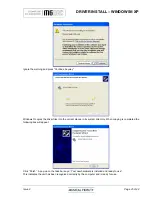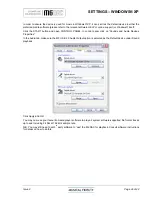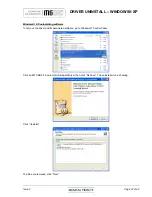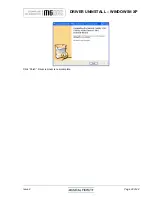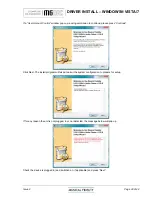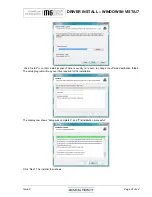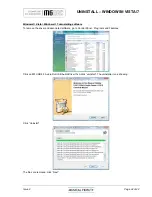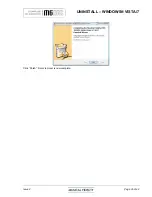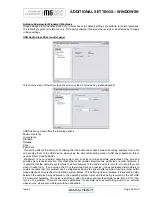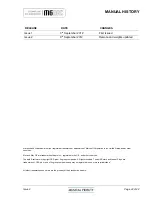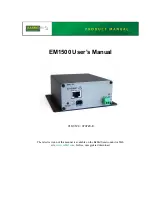
ADDITIONAL SETTINGS – WINDOWS®
Issue 2
Page 38 of
42
Neither the USB driver nor the MF USB 2.0 Audio out do any sample-rate conversion. Audio will always
be played in its native sample rate, as stored on the computer.
Streaming Mode
The USB driver provides a facility to continuously stream samples to the USB device even when audio is not
being played. When no audio is playing, zero-samples are continuously sent out. In this mode both the host PC
and the MF USB 2.0 Audio Out interface will use a little more power and the MF USB 2.0 Audio Out will
continue to consume bandwidth on the USB port it's using. This mode may prevent pops or clicks in some audio
configurations.
Power Saving
Selecting this will save power when audio is not playing by deselecting the USB audio streaming interface.
Output Channels button.
Clicking this pops up a dialogue showing the MF USB Audio output channels. One can mute the MF USB 2.0
Audio Out output here. The MF USB Audio does not provide any internal volume controls, so these are disabled
here.
The Audio2 USB model exposes an internal clock source. This source is programmed by the USB driver to the
current sample rate, which is shown in the window here. The actual MF USB 2.0 Audio Out hardware has
separate high precision clocks for
multiples
of 44100Hz and 48000Hz, respectively; the appropriate selection is
made
automatically
by the firmware and is not directly controlled by the USB driver. Therefore, the “Apply”
button here has no utility in this particular design.
This shows the output sample rate format for the MF USB 2.0 Audio Out. The device only supports natively two-
channel (stereo) 24-bit samples. Therefore, this setting cannot be altered,
Note: The MF USB Audio driver provides native ASIO support. The use of a 3
rd
party ASIO driver is not
necessary. In Win7 the use of WASAPI in exclusive mode is recommended. This can be configured individually
in the player application e.g. J-River Media Centre. Win7 Sounds can also be configured to use this mode. Its
possible Win7 may do sample-rate conversion when not playing directly through a media player.


